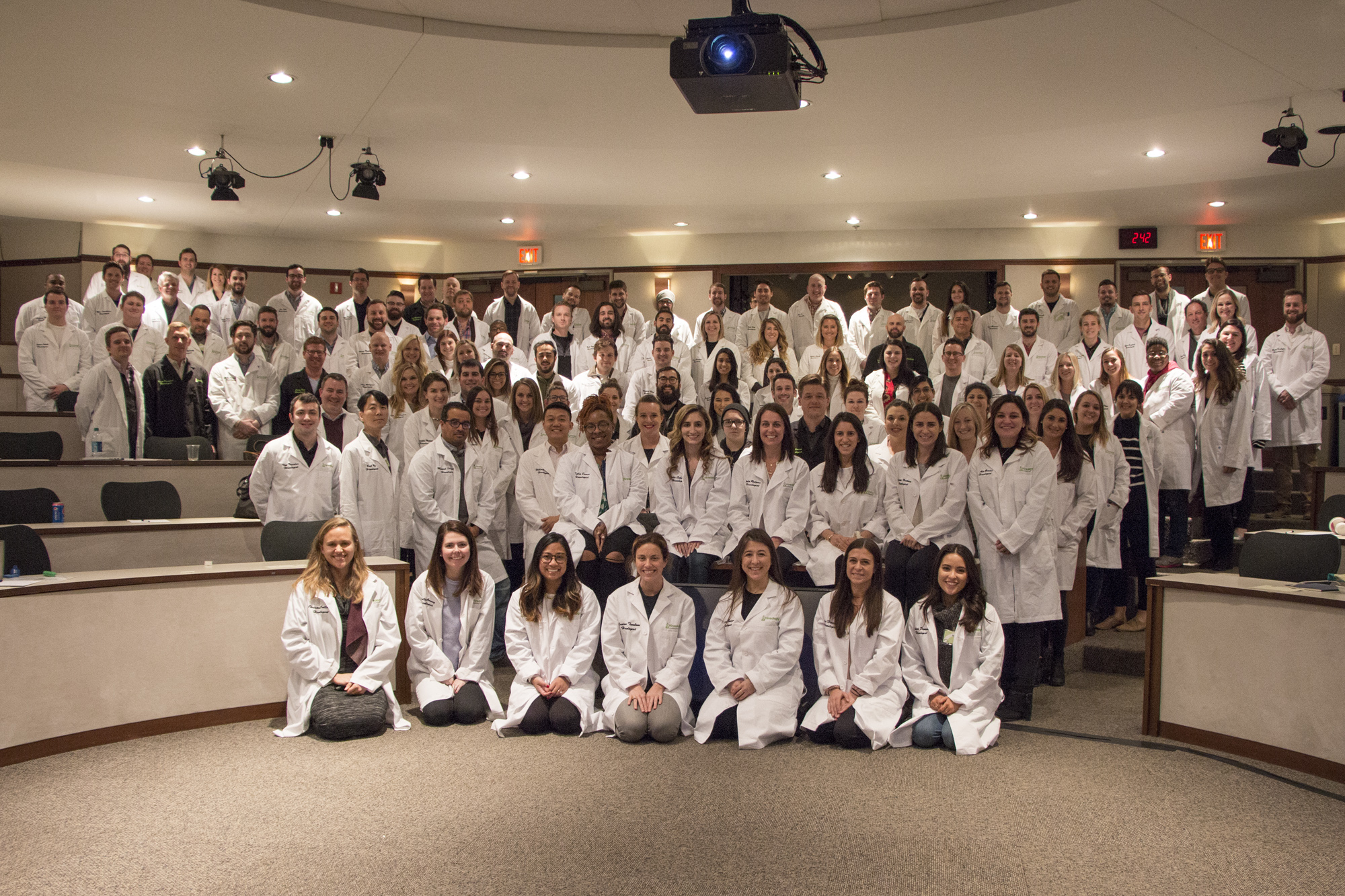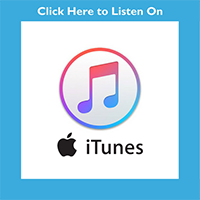Hireology is hiring 20+ people in one month. Melissa Ryan, Director of Talent, shares tips for recruiting for high-volume with high-velocity.
Transcripts:
| Adam Robinson: | Hello and welcome to the Best Team Wins podcast, where we feature entrepreneurs and business leaders whose exceptional approach to the people side of their business has lead to incredible results. My name is Adam Robinson, and for the next 25 minutes, I will be your host as we talk about how to build your business through better hiring. Today on the program we have someone very special on the show, Melissa Ryan, Hireology’s very own director of talent is here with me today to discuss high volume recruiting.
|
| So if you’ve been listening to this show for a while, you’re out there trying to grow or run your business, you will inevitably if you have not already be facing a giant wall of open roles that you’ve got to fill. Melissa is in charge of making sure that that gets done here at Hireology. So we’re gonna talk about from her perspective what it’s like to help a company grow exponentially on the people side of their business, and I look forward to digging in. Melissa, welcome to the show.
|
|
| Melissa Ryan: | Thank you so much Adam, I’m happy to be here.
|
| Adam Robinson: | At Hireology, right now we’re recruiting how many people?
|
| Melissa Ryan: | We have over 40 open roles.
|
| Adam Robinson: | 40 roles for a 150 person company, so we’re growing the business by almost a third in the next couple of months, that’s nuts. How many of them are sales roles?
|
| Melissa Ryan: | We have 28 open sales roles.
|
| Adam Robinson: | So the bulk of those are revenue-focused roles?
|
| Melissa Ryan: | Correct.
|
| Adam Robinson: | And we’re trying to get this all done by when?
|
| Melissa Ryan: | March 19th is our target hiring date.
|
| Adam Robinson: | Okay, you’re just saying that, like wow. As of the recording of this podcast, that looks like two weeks to me.
|
| Melissa Ryan: | Two weeks from today.
|
| Adam Robinson: | So let’s jump right in. What are we doing to make sure that that happens? Because a month ago it was you working on the more manager and senior level roles that we had open, and our full-time recruiter on staff, Jordan Hester, running everything else. I see a lot of people around here now I didn’t see last week, so let’s talk about what you’ve done to help supplement what we need which is probably just raw horsepower.
|
| Melissa Ryan: | Yeah, so when Peter and Julie, our CFO and CO came to me and said, “Melissa, we have identified this need, we are gonna open the 28 open sales roles.” I obviously understood the business impact that it would have if these roles went unfilled, and so one thing-
|
| Adam Robinson: | Like what?
|
| Melissa Ryan: | Lost revenue. Having an open seat, not only are you losing revenue by not having somebody in that role, but if somebody is previously in that territory, there’s lost quota coverage as well. It can have a really big business impact, and what we’ve identified here at Hireology is that for [inaudible 00:03:06] sales people it can take anywhere from; Depending on the level; two to six months. And so, I understand the urgency in wanting to get these people in the door as soon as possible.
|
| Adam Robinson: | So what did we do?
|
| Melissa Ryan: | I honestly took a minute to process it. Thankfully, having the support of Peter, I knew that I didn’t have to do it all alone, so quickly reached out to a staffing agency here in Chicago that I have a good relationship with and leveraged them for currently three different resources. So we have someone here for sales recruiting, adding another horsepower to the process.
|
| We have one individual here helping us source passive candidates. With sales talent, the best sales people are not looking for jobs, and so having somebody solely focused on reaching out to these candidates within the Chicago market and basically explaining why they should talk to us, give us five, 10 minutes on the phone. And then we have one person here helping us coordinate, screening resumes, scheduling interviews, following up with candidates, kind of someone at each point in the pipeline. We also are working with one direct hire agency to help us just with additional final help as well.
|
|
| Adam Robinson: | That’s great. Melissa, that sounds like a sales process.
|
| Melissa Ryan: | Yes, it really truly is, and that’s how … I took a step back and looked at it. I worked with our business operations team to look back at over the past six months, historically how many applicants to candidates to phone screens to in-person interviews has it taken us to hire one person. And so that’s helped me look at setting goals and metrics for our team today of what they need to focus on each and every day.
|
| Adam Robinson: | That’s great. All right, so we’ve got a team of support doing the heavy lifting here, which is awesome. There’s a couple of other things we’ve done. We had a sales open house last week that came out of nowhere by the way, that was organized in about a day. Tell me about that.
|
| Melissa Ryan: | Yeah, so I’ve done this with previous companies, and what I found is that if you open your doors to candidates that may or may not be looking, they’re able to come in and get just some perspective on your culture, see your office. It’s held after hours, so it’s not taking any time out of their business day to just see what it’s like to work at Hireology. And I feel truly passionate that we have one of the best cultures in Chicago, we have a really strong employment brand, and so if we can just get an hour of these people’s time to come in and see for themselves what it’s like to work here, then we can hopefully draw their interest and appeal to them as a potential employer.
|
| Adam Robinson: | So what did you do to set that up?
|
| Melissa Ryan: | We set it up about a week in advance, so obviously it was a really quick turnaround time, we had an aggressive target. However, what I found is that if you set the date three weeks in advance, you end up with a lot more no-shows, so people are CPS and then they don’t show up. With a weeks time, we leverage not only our internal team to post the invitation onto their social media and their LinkedIn, we also were sending out … Each of the recruiters were sending out at least 25 messages each day to passive candidates just saying, “Hey, we have this open office, just come in and check us out.”
|
| We also have great partnerships we’ve built in Chicago in ITA, and so we were able to leverage both of them to post out to their networks, post at an event. We saw a lot of response. In total we had about 40 RSVP’s and about 30, I want to say 30 attendees, so there was a really great turnout.
|
|
| Adam Robinson: | Good, and what did they do when they got here?
|
| Melissa Ryan: | So of course we had some cocktails, beer and wine, and then appetizers. People love to eat and drink, so we had that here. But we organized just a quick presentation, our VP of sales, Max Lowenbaum presented on the things that sales people want to hear about, career progression, how can they grow, and then our core values ’cause that’s so important to us as we continue to hire in scale. So just a brief presentation on those two items, and then we also had a panel.
|
| We had four different members of our sales team at different levels, and those that had been … One person that’s just started and then ranging up to somebody that’s been here for two and a half years that’s been promoted four different times. We wanted to tell the story across all different levels and experiences of what their experience has been here at Hireology.
|
|
| Adam Robinson: | That’s great, so all in, for listeners to get a sense for what it took to throw that together in a week, this was something that no matter how big you are, when you’re looking to hire, this is the tool they can use. How much time did you put into this? Excluding the actual couple hours of the event.
|
| Melissa Ryan: | I would say at least an hour a day dedicated to sourcing, and that was myself and Jordan and the temps as well.
|
| Adam Robinson: | Sourcing open house attendees?
|
| Melissa Ryan: | Yes, reaching out to candidates on LinkedIn and other mediums just to say, “Hey, we’re having this event, you should come.” So about an hour a day I would say in total.
|
| Adam Robinson: | Okay, so about five hours?
|
| Melissa Ryan: | Yeah.
|
| Adam Robinson: | Okay, and how much did we invest financially in this?
|
| Melissa Ryan: | It was less than $1,000.
|
| Adam Robinson: | That’s food and beverage pretty much.
|
| Melissa Ryan: | Yeah, exactly. And so from a return on investment standpoint, my goal is to hire two different people from that event, but truly the impact I think that that event had is that on our employment brand, people were able to see why Hireology is different and ultimately have 30 people that are raving fans that want to work here.
|
| Adam Robinson: | That’s great, I think we’re gonna get the hires.
|
| Melissa Ryan: | Yeah, I think so.
|
| Adam Robinson: | That’s great. For listeners, think about your cost per hire, how much does it take you to get someone in the door in your business if you add up all the money you spent on job boards last year and recruiters and all of the cost inputs to getting your hires, and then divide that by the number of hires you made, you get a cost per hire number that for most companies is between $3,000 and $5,000, somewhere in there. So if we hire three people for $1,000, that’s pretty outstanding ROI, very, very cool.
|
| You’ve got people coming in on Saturdays doing interviews, tell me about that.
|
|
| Melissa Ryan: | Yeah, the thought behind a Saturday interview day … We are a high growth business and the managers are really busy in meetings back to back all day, and so to hire 28 people, the total number of interviews is around 300 interviews, and so for us to be able to carve out time outside of the business hours, not only is it for the hiring managers less distraction, we actually have comfort in terms available. It’s just to be completely focused on interviews, I would say is just a more efficient way to use our time, and also for candidates it allows them to not have to take time off during the work day, they’re typically more flexible in what times they can come in. So to be able to crank out hopefully 15 interviews in a day versus scheduling that over the course of a week, it just is a lot more efficient.
|
| Adam Robinson: | So I’m sure people are thinking, how are people on Saturday … What our managers say when we said, “Hey, we need you on Saturday.” And what our candidates say when we’re inviting them in on Saturday.
|
| Melissa Ryan: | Candidates are really appreciative of the flexibility.
|
| Adam Robinson: | That’s great, that’s surprising to me. Maybe it shouldn’t be.
|
| Melissa Ryan: | Some candidates have things planned, they’re not able to come. If that’s the case then we’ll schedule them sooner or the next week. But I guess from my experience, they’ve appreciated being able to come in outside of the business hours, and they understand … We communicate to them that this is not the expectation for them, so we truly are a company that focuses on work-life balance, and it is rare that we have to come in on a Saturday. It’s probably only my second time ever where I’ve had to dedicate that time to coming into the office. But we just explained that this isn’t the expectation moving forward.
|
| Adam Robinson: | Right, to what extent are you presenting that upfront when we’re doing interviews? How are we setting that expectation, what’s the message? So if I’m listening and I want to know how I communicate that when I’m talking with the [inaudible 00:12:46] applicant, what are we saying?
|
| Melissa Ryan: | I just say, “We’re hosting interviews on this Saturday because we are going through such a high volume hiring push and we have X number of open roles. We are dedicating this time to provide a bit more flexibility across the board.”
|
| Adam Robinson: | Okay, very cool.
|
| Melissa Ryan: | Hiring managers, they appreciate it as well. They might not be excited to come in and do interviews on a Saturday, but they understand the importance of hiring and it’s important to them as well that they get these spots filled.
|
| Adam Robinson: | That’s great, what else do you have going on in support of this mission?
|
| Melissa Ryan: | We I would say are taking an approach of being very metrics-driven, so setting targets each day that are focused on very specific roles and being aware of where our pipelines are at for the different positions. If we know that our candidate traffic has been really light for our payroll account executive role, then we communicate each morning to have our sourcing help us with that specific role. So I think it just is all about open communication, having an intentional system of metrics and holding the team accountable to that.
|
| Adam Robinson: | It’s interesting, it is truly a sales pipeline that you’re managing.
|
| Melissa Ryan: | Yeah, absolutely. If you’re not getting enough leads or candidates on the top end of your funnel, you’re not gonna hit your hiring goals.
|
| Adam Robinson: | What role in all of this does the direct hire firm play? Is there a particular strategy you’ve got in place for them for specific roles? Walk us through your thinking on how you’ve organized their support.
|
| Melissa Ryan: | Their support I directed specifically at the roles that are historically hardest to fill. In Chicago, sales hiring is really competitive, and so to have an agency that’s focused on sales recruiting in Chicago, they have a network of candidates that … I trust her to send us the best people, and if we’re able to fill the hardest roles with their help, we can focus on the other high-volume number of roles that we have open.
|
| Adam Robinson: | Yeah, very good. I mean, particularly for revenue generating roles, I know I’ve always; As someone in the hiring business; certainly had an aversion to paying fees for recruiting help, that seems like a complete paradox that we would need to do that. However, the math is pretty clear. There is a cost associated with unfilled roles, there is a payoff when sales start being generated that are months down the line, not years, and there’s a certain dollar amount that it’s worth to front load all of these hires. Anyone that comes in under the line with a fee structure is a pretty good investment to make.
|
| Melissa Ryan: | Yeah, it will pay for itself in the first three to six months.
|
| Adam Robinson: | So for folks listening to this, what was the amount of lead time you had? It sounds like we had to have this thing up and running for a long time, but what was the lead time you had to pull this together?
|
| Melissa Ryan: | It was on a Thursday, I wish I could remember the exact day. It was the last week of February, so it was ultimately like three and a half weeks of a turnaround time, so it’s … Yeah.
|
| Adam Robinson: | The last week of … I think really this may be the beginning of the third week. What I’m saying is I think it’s less time than you may remember it being. Pretty good.
|
| Melissa Ryan: | Yeah, and obviously I am all for … The message that I communicated to my team was that this was our opportunity to make a really big impact on the business, and so while the pressure is on and the stakes are higher, this is our time to shine, so I think that if … Phrasing it to those that are gonna be working harder than they’ve worked in a really long time, I think it’s just an opportunity to really show what we’re made of.
|
| Adam Robinson: | Yeah, it’s great. It is a huge value, very real tangible value to the business, all eyes are definitely on it. What are some other approaches you have used either here or in your prior lives like Groupon Goods and some of these other really high volume staffing programs that you’ve put together? What would you say are some rules of the road that can help our listeners ramp without blowing up their culture or process?
|
| Melissa Ryan: | I think it’s important to … While we have a lot of roles open and we have a lot of positions to fill, we would never hire someone just to put a butt in the seat, that’s just not how we do things here. We are really intent on hiring to our core values, and I would never … There’s a huge risk involved if you hire even just one person that you feel doesn’t align with your core values, that can have a really negative impact on your culture and employment brand, so I would just caution against straying from your values.
|
| Adam Robinson: | Cool, and in terms of do’s and dont’s for working with vendors for anyone who’s not done that before, when you pull the chain and get a bunch of help in the door, take us through what’s worked and not worked for you, what have you done well and what would you do differently?
|
| Melissa Ryan: | With the direct hire agency that we’re working with, I think it’s just really critical that they understand obviously the opportunity and the role itself, but they also need to really understand our culture and our core values in order for us to hire the right person and for them to add value to us, we just want to make sure that they’re putting the right candidates in front of us, and so I spent over a few calls time with the agency talking through that.
|
| With the temps that we’ve brought to help us internally, each of them went through orientation just as a new hire did, so they can hear how I talked to new hires about our core values and how we basically integrate them into the business and just our culture as well. So I think it’s just important that they are able to talk about the company and the culture just as any other employee would.
|
|
| Adam Robinson: | So it sounds like we’re making the right investments of time to have these investments pay off.
|
| Melissa Ryan: | Yeah, absolutely. Even though everyone is really busy, it’s just important to pivot your schedule to really ensure that they are spreading the right message about your employment brand.
|
| Adam Robinson: | And so as we wrap up here, a couple of things. I like to ask guests on the show, is there one particular book or source of knowledge that really made an impact on what you do or how you approach business or the professional … Scratch that, let me ask this differently. We always like to ask guests on this show if there’s a particular book that’s been influential on the way that they approach business or life, for you is there anything in your professional library that you would recommend to listeners that is applicable to what we’ve been talking about today?
|
| Melissa Ryan: | And I’m not just saying this ’cause I’m on your podcast, but reading your book I think really helped me …
|
| Adam Robinson: | Shameless plug, thank you.
|
| Melissa Ryan: | You’re the one that really created the core values and the intentional culture that we have here, and so that helps keep me focused and aligned to what my team is helping build.
|
| Adam Robinson: | If you were to come back on this show in a year and tell us what 2018 looked like and what was accomplished for your organization, what do you want to be telling us a year from now?
|
| Melissa Ryan: | I think specifically reflecting back on this episode, I would be able to say that we hit our hiring goal and because of that we helped produce X amount of revenue. And I think that’s the best story that a recruiting team can tell, and that’s what makes my eyes light up. But there’s also a lot of other really exciting things in store for the people team this year, we’re expanding our office space and there’s a lot of other really cool initiatives we get to work on.
|
| Adam Robinson: | All right ladies and gentlemen, you’ve been learning from Melissa Ryan, director of talent here at Hireology. Melissa, thank you for being on the program.
|
| Melissa Ryan: | Thanks for having me.
|
| Adam Robinson: | And that’s a wrap for this weeks’ episode of the Best Team Wins podcast where we’re featuring entrepreneurs and business leaders whose exceptional approach to the people side of their business has lead to incredible results. My name’s Adam Robinson, author of the book The Best Team Wins, which you can find online at www.thebestteamwins.com. Thanks for listening, and we will see you next week.
|



